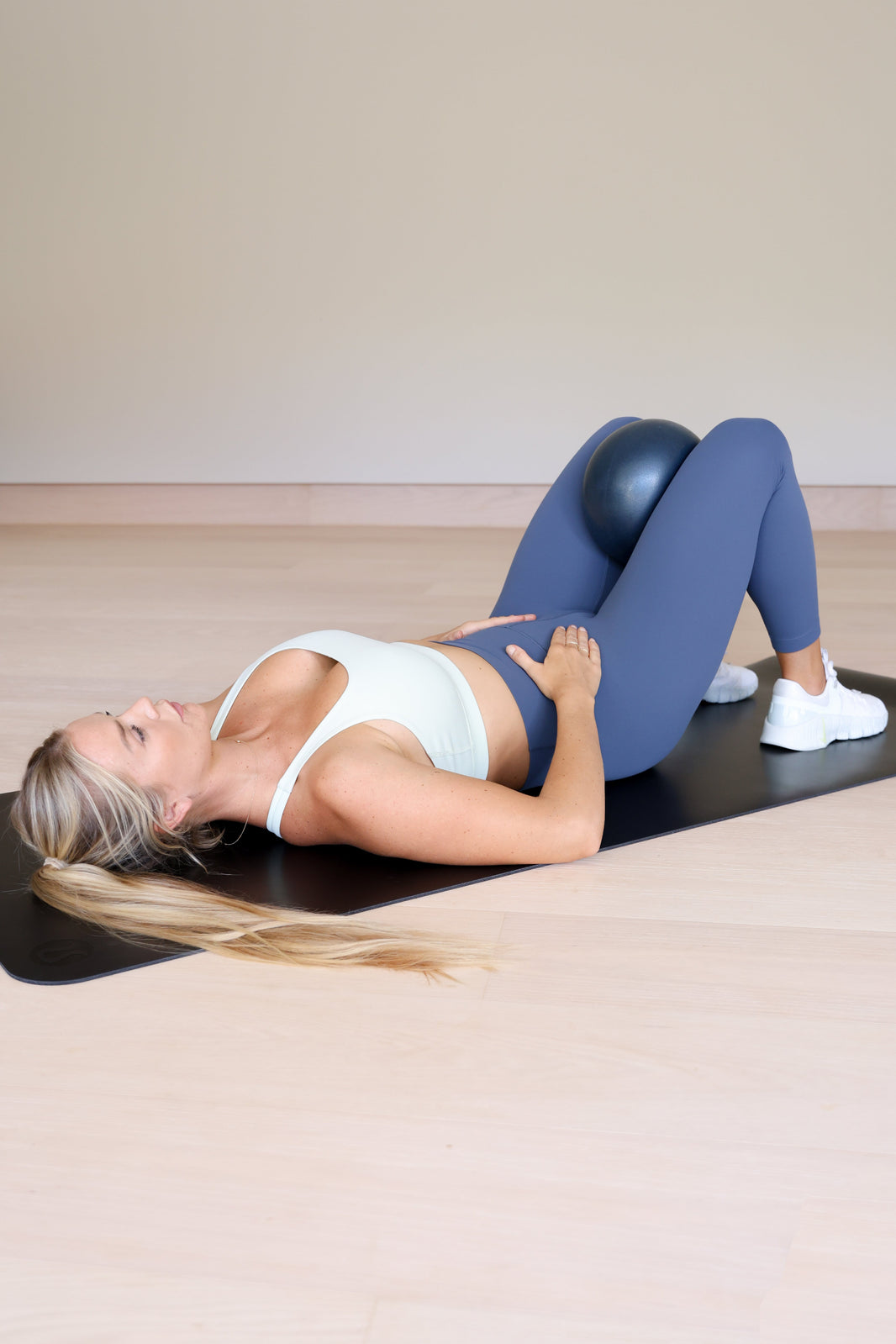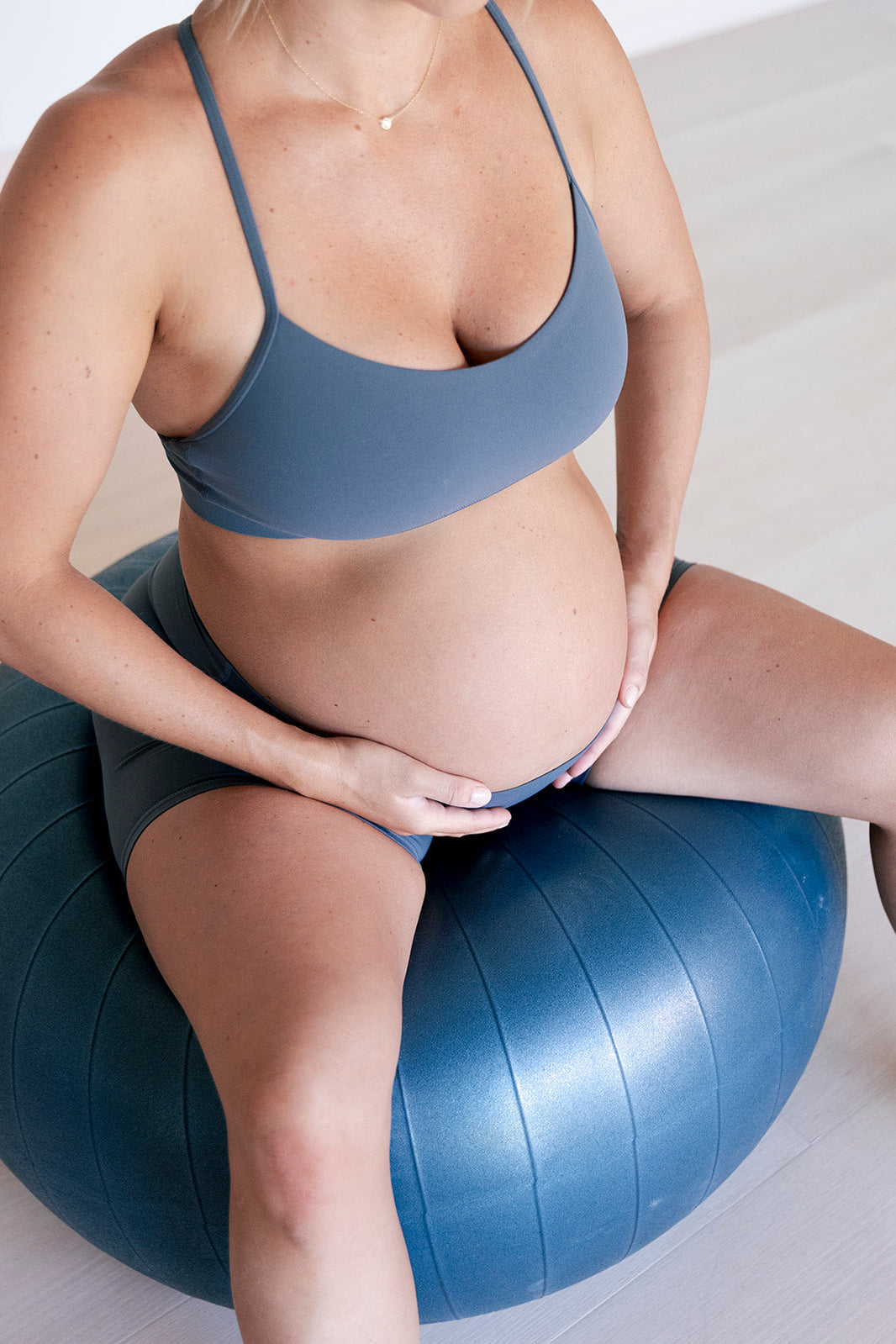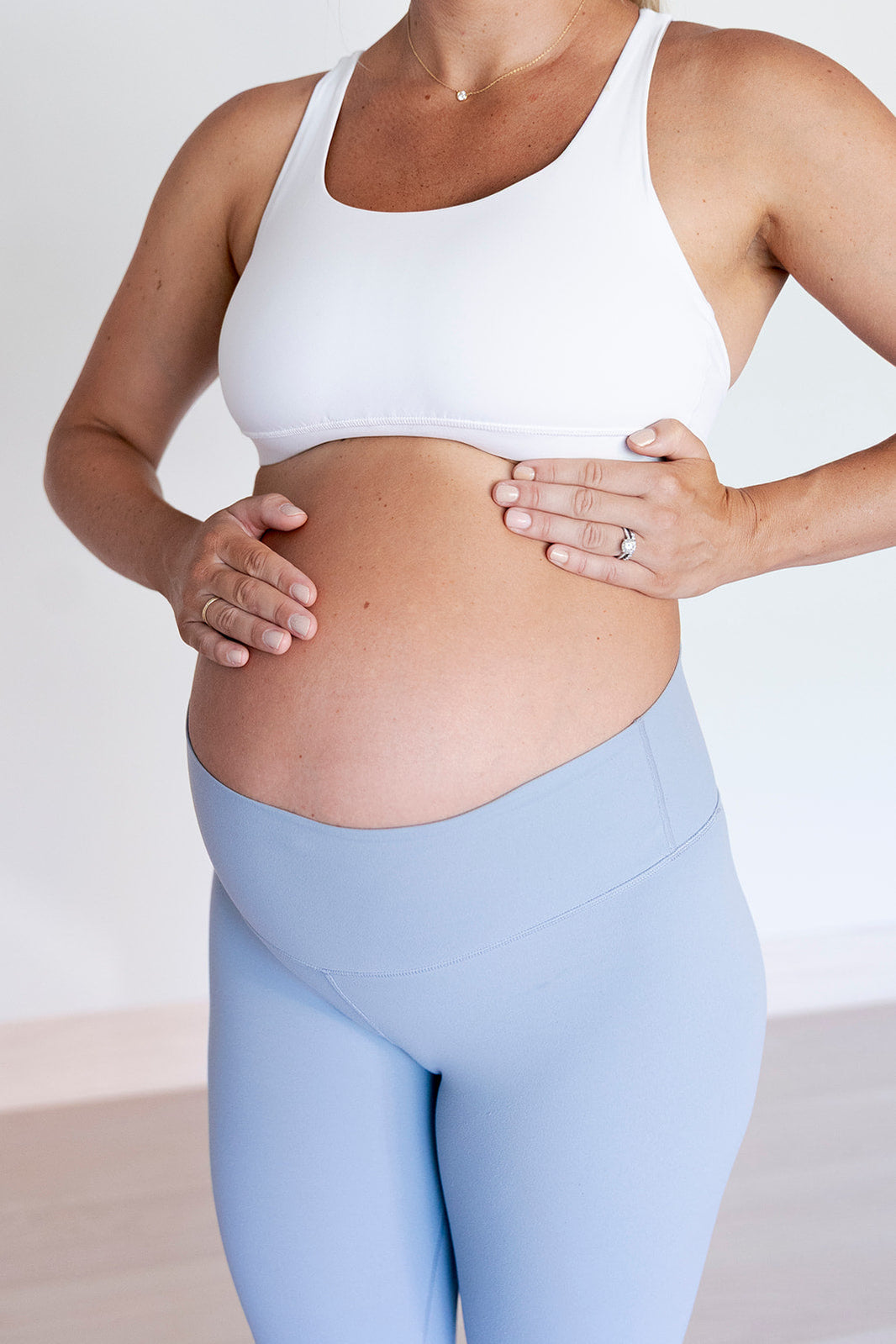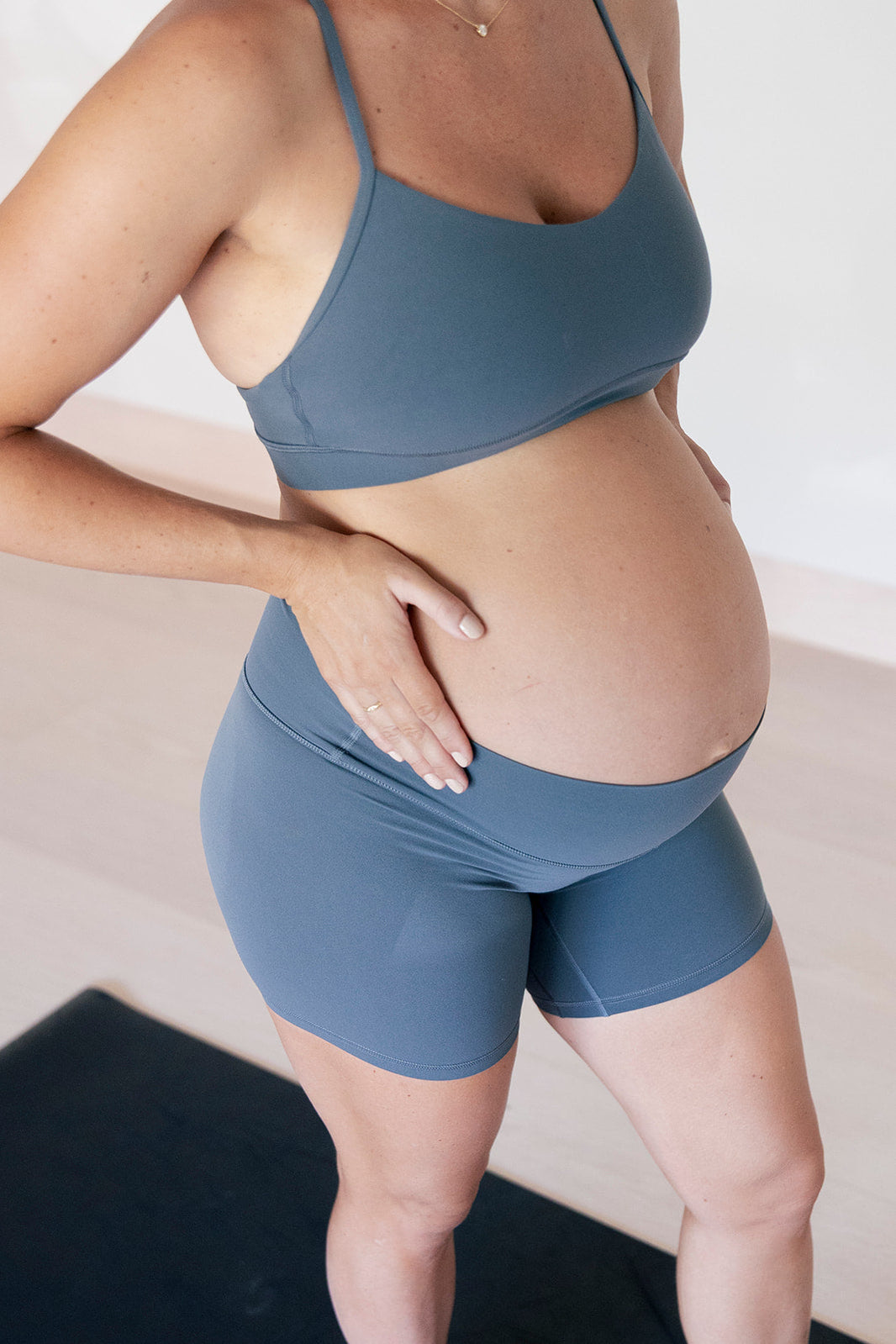Returning to running after having a baby is a significant milestone and returning to running postpartum should be looked at much like recovering from a major injury, such as an ACL tear or ankle sprain. Postpartum recovery, especially for runners, should not be rushed or taken lightly. Your body has undergone profound changes, and just as athletes are cautious when returning to their sport after an injury, new mommas should approach their return to running with a similar mindset.
In this post, we’ll explore the common challenges postpartum women face when resuming running, how to assess readiness, and why strengthening exercises are crucial for a smooth and healthy transition back to running!
Why Running Postpartum is Like Recovering from an other Injury
Recovering from pregnancy and childbirth is comparable to recovering from a sports injury in many ways. Just as an ACL tear requires months of physical therapy to regain strength, balance, and confidence, the pelvic floor and core need time and intentional rehabilitation before returning to high-impact activities like running. Not only that, but you just spent 6 weeks recovering with minimal exercise or activity, if not more if you took severely decreased your exercise during pregnancy. Our bodies are now physically deconditioned, recovering from either a vaginal or belly birth, and our life has been turned upside down with sleep changes, food intake changes, and hormone fluctuations.
Common postpartum concerns, such as urinary incontinence and pelvic organ prolapse, can be exacerbated by running too soon. In fact, 15-30% of first-time mothers experience urinary incontinence, while about 20% deal with fecal incontinence a year after giving birth, especially if they had symptoms during pregnancy (Milsom et al., 2014; Johannessen et al., 2014). Additionally, studies have shown that up to 56% of new mothers show signs of pelvic organ prolapse within the first 6 months postpartum (Bø et al., 2017). This condition occurs when the bladder, bowel, or uterus moves downward into the vagina, often causing discomfort or pressure.
These statistics highlight the importance of a slow and steady approach to running after childbirth. Rushing into it can lead to further complications, but with the right guidance and recovery, you can return to running confidently and safely.
Why Pregnancy and Childbirth Change our Body
Pregnancy and childbirth significantly alter the body, particularly the pelvic floor and abdominal muscles. During pregnancy, the pelvic floor muscles stretch and the levator hiatus, a space in the pelvic floor, widens. This area can increase even more during a vaginal birth. Research indicates that recovery for these tissues can take 4-6 months, far longer than the traditional 6-week postpartum check-up might suggest (Shek et al., 2010; Stær-Jensen et al., 2015).
For mommas who had a c-section, recovery also takes time. Studies show that the abdominal fascia, a key tissue in core stability, regains just over 50% of its original strength by 6 weeks postpartum, and it can take up to seven months to recover up to 93% of its original strength (Ceydeli et al., 2005).
Pelvic health therapists and other exercises scientists emphasize the need for an extended recovery period, much like we would for any other significant muscle, tendon, or ligament injury. The common 6-week mark often used to clear mommas for exercise is just the beginning. A gradual approach that helps mommas regain strength while protecting their pelvic health is crucial for long-term success with getting back into running
Signs and Symptoms of Pelvic Floor Dysfunction
Before resuming running, it’s important to recognize the signs of pelvic floor or abdominal wall dysfunction. Common symptoms include:
• Urinary or fecal leakage
• Urinary or fecal urgency
• Heaviness, pressure, or a bulging sensation in the pelvis
• Pain during sex
• Coning or doming of the abdomen (diastasis rectus abdominis)
• Low back or hip pain
These symptoms suggest that the pelvic floor or core is not functioning optimally. Returning to running without addressing these issues can worsen them and can not only affect your quality of life, but can lead to other aches and pains too.
Risk Factors for Pelvic Floor Dysfunction
Certain factors increase the risk of pelvic floor or abdominal dysfunction when returning to running postpartum. These include:
- Resuming running less than three months postpartum
- Breastfeeding (which can influence hormone levels and muscle recovery)
- Pre-existing pelvic floor issues or low back pain
- Obesity
- C-section deliver
- A significant perineal tear during childbirth
- Ongoing postpartum bleeding beyond eight weeks not related to the menstrual cycle
- Postpartum depression or psychological stress
- A diagnosis of hypermobility
Recognizing these risk factors can help you make an informed decision about when and how to return to running. If any of these apply to you, consider seeking guidance from a pelvic health specialist and your birth provider before resuming high-impact activities.
Self-Assessment for Returning to Running
A self-assessment is a useful tool for determining whether your body is ready to handle the demands of running. Here are a few key milestones to look for:
Pelvic Floor Strength: Can you….
Perform a full squeeze and lift of your pelvic floor muscles in a standing position?
Hold this contraction for 6-8 seconds for 10 reps?
Complete 10 fast contractions?
Hold a 50% contraction for 60 seconds without symptoms?
Absence of Dysfunction: You should experience no signs of pelvic floor dysfunction (such as leakage or pain) during daily activities.
Functional Testing: Can you complete the following activities without pelvic floor symptoms?
Walk for 30 minutes?
Jog in place for 1 minute?
Hop in place on one leg for 10 rep?
Balance: Single leg balance is critical as you are on 1 leg the full time you are running. Can you…
Balance on one leg for 10 seconds?
Perform 10 single-leg squats without your hip dropping or your knee caving in?
Finish 10 “running man” movements without loosing your balance?
Strength: You should have adequate single-leg strength to absorb the impact of running.
Here are a few exercises to test:
-
- Single-leg calf raise x 20
- Single-leg bridge x 20
- Single-leg sit-to-stand x 20 without loss of balance
- Side-lying leg raise x 20
- Dead bug x 20 (without coning or doming of the abdominal wall)
- Active straight-leg raise (without coning or doming)
If you can complete these activities without difficulty, it’s a good sign that your body may be ready to handle the impact of running.
The Importance of a Gradual Strength Program
Before jumping back into running, it’s crucial to focus on building a foundation of strength. A gradual strength program that emphasizes single-leg balance, core stability, and impact management is key.
Exercises to work on starting to build the strength, balance, and impact management you need:
- Forward, lateral, and backward lunges
- Forward and lateral step ups
- Farmer carry marches
- Dead bug marches
- Bridges with hip drops
- Double leg calf raise lifts to single leg calf lowers
- Double leg stands to single leg sitting
If you’re unsure how to even start these or don’t feel strong with these, it may be good to just start a simple postpartum exercise routine, like we have through Momday, to reconnect to your core and pelvic floor muscles
Feeling ready to start running again? It’s also important to follow a progressive return-to-running program. Start with short intervals of running followed by walking, gradually increasing the running time while decreasing the walking time. Eventually, you’ll build up to continuous jogging. This allows your body to adjust to the impact and prevents overuse injuries.
Idea of a return to running program:
Week 1: 30 sec jog, 1.5 min walk x 10-15
Week 2: 1 min jog, 1 min walk x 10-15
Week 3: 1.5 min jog, 1 min walk x 10-15
Week 4: 10 min jog, 2 min walk x 2-3
Week 5: 20-30 min jog straight
Other Considerations for Returning to Running Postpartum
There are a few additional factors to keep in mind as you prepare to return to running postpartum:
- Supportive Sports Bra: Your breast size may have changed during pregnancy and breastfeeding, so invest in a supportive sports bra to minimize discomfort.
- Footwear: Your shoe size may have changed during pregnancy, so make sure your running shoes fit properly and provide adequate support.
- Sleep: Sleep is essential for recovery, both physically and mentally. Make sure you’re getting enough rest to support your body’s healing process.
- Nutrition: Avoid relative energy deficiency in sport (RED-S) by ensuring you’re consuming enough calories and nutrients to fuel your body. Returning to exercise too quickly or intensely without proper nutrition can affect bone health, pelvic health, and even future fertility.
Lastly
Returning to running postpartum can be a rewarding and fulfilling goal. It supports physical and mental well-being, helps maintain pelvic floor and core strength, and provides a sense of accomplishment during the postpartum period. However, it’s crucial to approach it with caution, listening to your body and ensuring you’ve built a solid foundation of strength, stability, and endurance before taking on the high-impact demands of running.
By following the guidelines outlined in this post, you’ll be well on your way to a safe and successful return to running, supporting your overall health and well-being in the long term.
References
Milsom, I., Gyhagen, M. (2014). The prevalence of urinary incontinence. International Urogynecology Journal, 25(7), 935-941.
Johannessen, H.H., Wibe, A., Stordahl, A., Sandvik, L., Mørkved, S. (2014). Anal incontinence and quality of life in late pregnancy and after delivery: A prospective study. BJOG: An International Journal of Obstetrics & Gynaecology, 121(1), 41-49.
Bø, K., Hilde, G., Tennfjord, M.K., Engh, M.E. (2017). Pelvic floor muscle function, pelvic organ prolapse, and quality of life after childbirth: A longitudinal cohort study. Neurourology and Urodynamics, 36(2), 420-427.
Shek, K.L., Dietz, H.P. (2010). The effect of childbirth on levator hiatus dimensions. BJOG: An International Journal of Obstetrics & Gynaecology, 117(11), 1366-1372.
Stær-Jensen, J., Siafarikas, F., Hilde, G., Bø, K., Engh, M.E. (2015). Postpartum recovery of levator hiatus and pelvic floor muscle function: A longitudinal study. BJOG: An International Journal of Obstetrics & Gynaecology, 122(9)
- Donnelly G ,
- Brockwell E ,
- Goom T.
Return to running postnatal - guideline for medical, health and fitness professionals managing this population. Physiotherapy 2020;107:e188–9.








